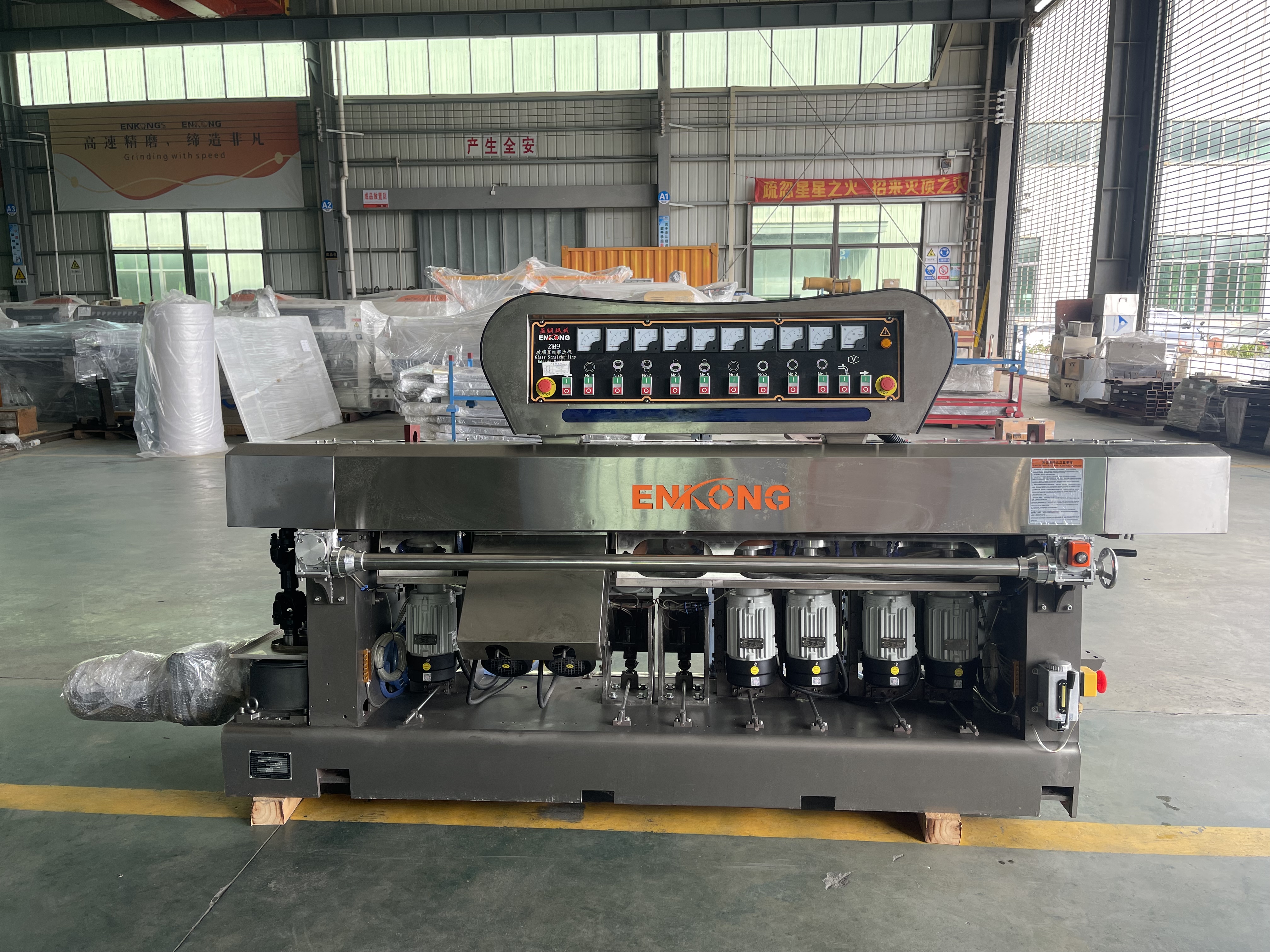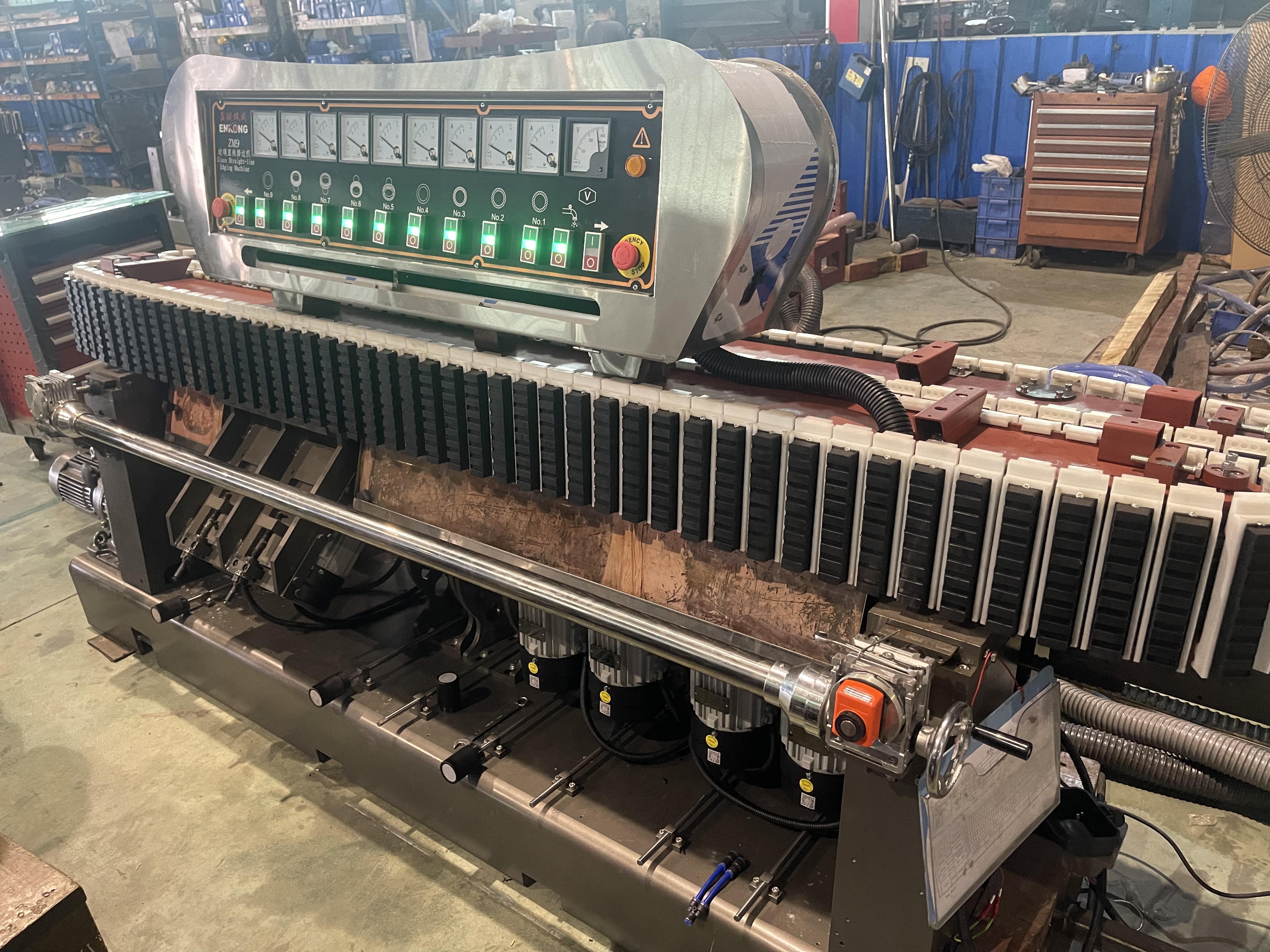In today’s competitive glass manufacturing industry, precision, speed, and quality are non-negotiable. But how can businesses ensure their operations meet these demands while staying ahead of the curve? The answer lies in investing in cutting-edge machinery designed to streamline workflows and elevate output. In this deep dive, we explore the game-changing tools—glass edging machines and how they revolutionize modern glass production.

1. Why Should You Prioritize a Glass Edging Machine?
A glass edging machine is no longer a luxury—it’s a necessity for manufacturers aiming to deliver flawless edges on glass products. Whether producing sleek tabletops, automotive windows, or architectural glass panels, uneven or chipped edges can ruin aesthetics and compromise safety.
Modern glass edging machines automate the grinding, beveling, and shaping processes, ensuring consistent results with micron-level accuracy. By eliminating human error, these machines reduce material waste and rework costs. For instance, a high-performance glass edging machine can process up to 30 linear meters of glass per hour, a feat impossible to replicate manually.
But the benefits don’t stop there. Pairing a glass edging machine with a versatile glass processing machine creates a seamless workflow. While the former perfects edges, the latter handles cutting, drilling, and engraving—making your production line a well-oiled machine.
2. How Does a Glass Processing Machine Transform Your Workflow?
A glass processing machine is the backbone of any advanced glass fabrication facility. This multifunctional equipment integrates cutting, drilling, milling, and tempering capabilities, enabling manufacturers to tackle complex projects with ease.
Consider this scenario: A client orders custom-shaped glass partitions with intricate cutouts for lighting fixtures. Without a glass processing machine, achieving such precision would require multiple tools and operators, increasing both time and costs. With a CNC-driven glass processing machine, however, the entire design is programmed once, and the machine executes it flawlessly—repeatably.
Moreover, integrating a glass polishing machine into the same workflow ensures that every surface meets optical clarity standards. After all, even the most precise cuts lose their appeal if the glass lacks a pristine finish.

3. What Role Does a Glass Polishing Machine Play in Quality Assurance?
A glass polishing machine is the final touchpoint that elevates glass from "functional" to "exceptional." Scratches, haze, or uneven surfaces can detract from the perceived value of products like smartphone screens, decorative mirrors, or high-end display cases.
Automated glass polishing machines use advanced abrasive belts, diamond pads, or chemical polishing techniques to achieve mirror-like finishes. For example, a dual-head glass polishing machine can simultaneously polish both sides of a glass panel, slashing processing time by 50%. When combined with a glass edging machine, this creates a closed-loop system where edges and surfaces are perfected in tandem.
But here’s the catch: Not all glass polishing machines are created equal. Opt for models with adjustable speed and pressure settings to handle varying thicknesses and glass types—from tempered to laminated varieties.
4. Synergy in Action: Integrating Edging, Processing, and Polishing Machines
The true magic happens when glass edging machines, glass processing machines, and glass polishing machines operate in harmony. Imagine a production line where raw glass sheets are first cut and shaped by a glass processing machine, then refined by a glass edging machine to smooth edges, and finally polished to perfection.
This integration minimizes downtime, reduces labor dependency, and ensures uniformity across batches. For large-scale projects—think skyscraper glazing or automotive windshields—this trio of machines is indispensable.
Yet, many manufacturers still rely on outdated, siloed equipment. The result? Bottlenecks, inconsistent quality, and missed deadlines. Upgrading to interconnected glass processing machines, glass edging machines, and glass polishing machines isn’t just an investment—it’s a strategic move to future-proof your business.
5. Key Considerations When Choosing Your Machinery
Before purchasing a glass edging machine, glass processing machine, or glass polishing machine, ask these critical questions:
Capacity: Can the machine handle your production volume and glass thickness requirements?
Automation Level: Does it offer CNC controls or robotic integration for precision?
Versatility: Is it compatible with different glass types (e.g., tempered, laminated, coated)?
After-Sales Support: Does the supplier provide training, maintenance, and spare parts?
For instance, a glass polishing machine with IoT capabilities can alert operators to maintenance needs, preventing unexpected breakdowns. Similarly, a modular glass processing machine allows you to add functionalities like laser engraving as your business grows.
6. The ROI of Advanced Glass Machinery
Skeptics might balk at the upfront cost of a glass edging machine or glass polishing machine. However, the long-term savings are undeniable. Automated systems reduce labor costs, minimize scrap rates, and accelerate turnaround times.
Take a mid-sized glass workshop as an example: By replacing manual edging with a glass edging machine, they reduced edge-finishing time by 70% and saw a 20% increase in client retention due to superior quality. When paired with a glass processing machine, their monthly output doubled without hiring additional staff.
In short, these machines aren’t expenses—they’re profit multipliers.
Is Your Glass Production Line Ready for the Future?
The glass industry is evolving rapidly, with clients demanding faster deliveries, intricate designs, and flawless finishes. To stay competitive, manufacturers must adopt glass edging machines, glass processing machines, and glass polishing machines that align with these trends.
Don’t let outdated equipment hold you back. Whether you’re refining edges with a state-of-the-art glass edging machine, streamlining cuts with a multifunctional glass processing machine, or achieving brilliance with a high-speed glass polishing machine, the tools you choose today will define your success tomorrow.
Ready to transform your glass production? Contact our experts to explore tailored solutions for your needs!

